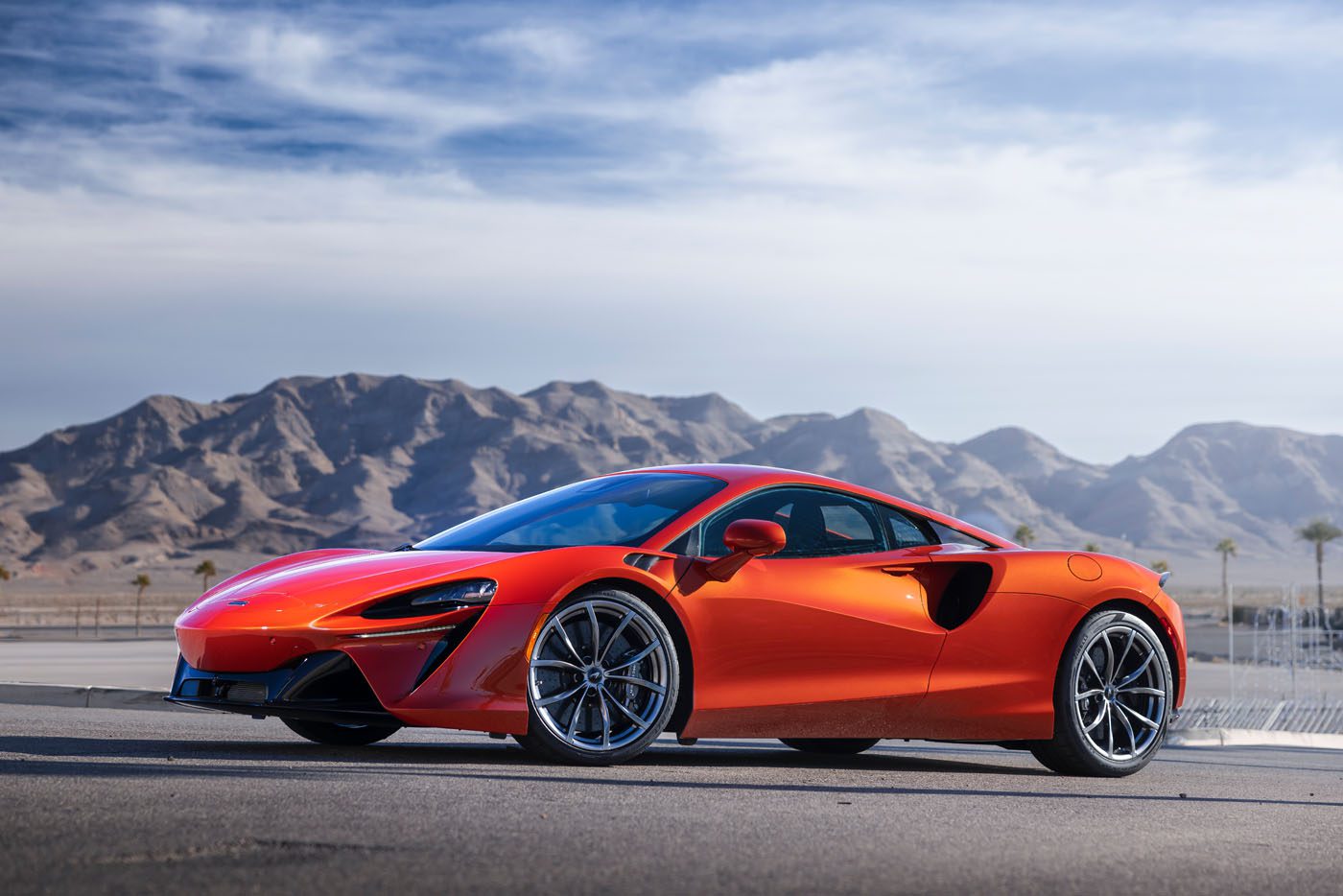British supercar manufacturer McLaren is stepping into a new era of performance, and it’s doing so with an entirely new car. Nothing in its latest creation; the 2023 McLaren Artura is a carryover from a previous model. From its carbon fiber monocoque to its 120-degree twin-turbocharged V6, eight-speed dual-clutch transmission, axial flux electric motor, 7.4kWh battery pack, and even interior are all components we’ve never seen before.
There’s a lot going on, and on paper, it seems that the Artura follows a similar recipe to that of the P1 hypercar, just in a smaller standard production form. The result is a Porsche 911-sized car with a 671 hp output, a run to 60 mph of three seconds, and despite lugging around an electric motor and a battery pack, a 3,300-lb curb weight.
I flew out to Las Vegas to drive the new Artura through Death Valley and at the Las Vegas Motor Speedway’s road course to see if all that clever packaging and engineering come together to deliver a truly memorable experience. And in true McLaren fashion, the Artura takes a very clinical approach to performance; it’s precise, calculated, and outrageously quick, even at the cost of flamboyance and pantomime. But despite how much of a performer it is, it’s not its speed that impresses most.
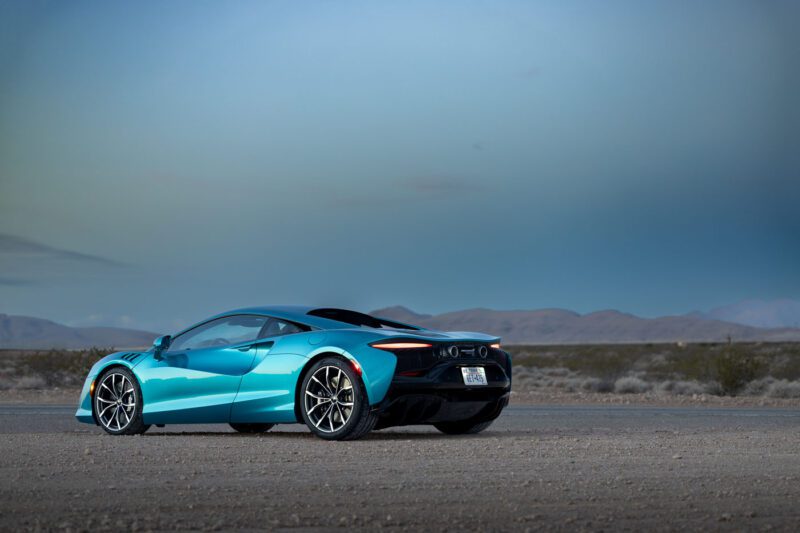
Without stepping in, it’s clear that the Artura is a masterclass in packaging. Take its all-new 120-degree 3.0-liter twin-turbocharged V6, for example. It’s very small, and thanks to two fewer cylinders and a hot vee turbo setup, it weighs just 353 lb, or 110 lb less than the 4.0-liter twin-turbocharged V8 in the 720S. It also sits about two inches lower and revs out to 8,500 rpm. Despite its tiny footprint, this new engine pumps out 577 hp and 431 lb-ft of torque. Combined with a 34-lb axial flux E-motor that develops up to an additional 94 hp and 166 lb-ft of torque, you get a total system output of 671 hp and 531 lb-ft of torque.
Thanks to its E-motor, the Artura can drive up to 81 mph for 19 miles in fully electric mode. Since this axial flux motor lives within the transmission’s bell housing, it also replaces a traditional reverse gear. Thus, the Artura’s new eight-speed transmission is about as large as a seven-speed would be. Although it doesn’t support fast charging, it’ll charge up to 80 percent after two and a half hours at (3.3 kW.) Alternatively, you can charge the battery by driving the car in its Sport or Track modes.
Why You Should Buy a McLaren Artura
Stepping in for the first time, the Artura feels decidedly like a grown-up supercar. It looks like the McLarens of old but lacks the manic nature of the 570S it replaces while not stepping on the 720S’ toes, which is intentional since it slots between the GT and the 720S within the marque’s offerings. It feels clinical and distilled, a feeling quickly reinforced by the sound of its engine firing up for the first time. It sounds like no V6 I’ve ever heard before, thanks partly to its 120-degree nature and tiny cylinders. And like the cars that came before it, it retains that video-game-like engine note. It’s sonorous, throaty, but ultimately synthetic.
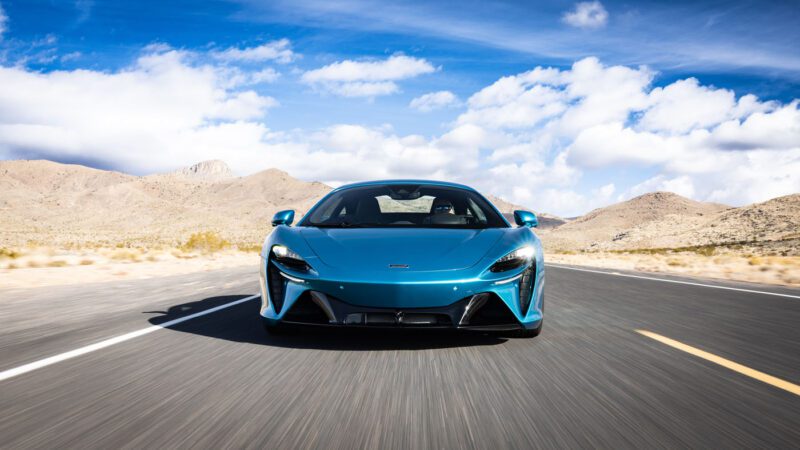
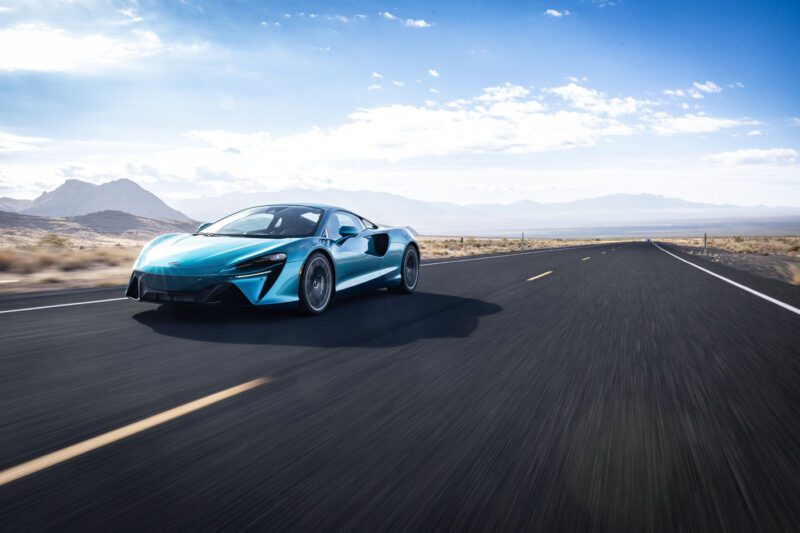
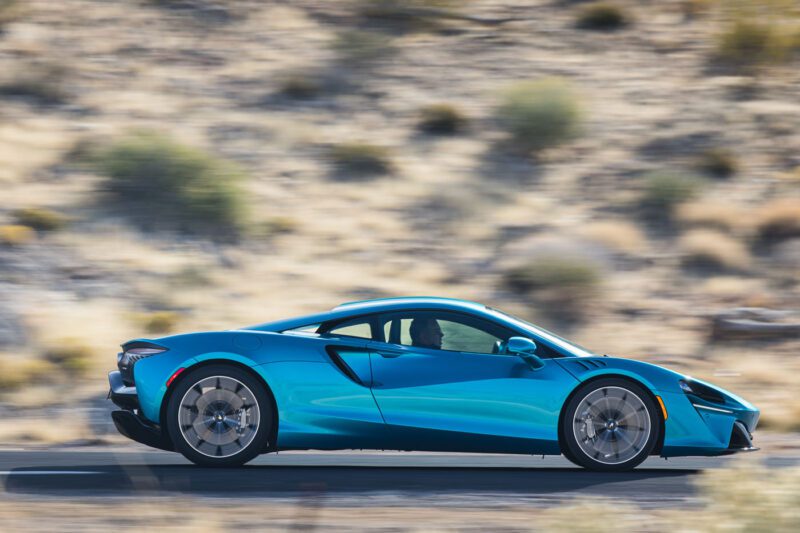
As I set off for the first time in E-Mode, the car’s startup configuration, I may as well have been behind the wheel of any other plush commuter. It’s quiet, civilized, and supremely comfortable. Despite riding mere inches off the ground, the Artura soaks up imperfections excellently. And despite not having an engine behind you drowning out unwanted noises, the cabin remains perfectly quiet. If you’re athletic enough to get in it, this supercar could be your only car.
The Artura’s drive mode and suspension selectors are just behind the steering wheel. A flick upwards on its right side shifts it into Comfort mode, fires up the engine past 40 mph, and keeps it on until your speed drops below 15 mph. It works like an auto-stop-start system, but I’d only use it for long highway journeys where the engine stays on. Having it shakes the car every time it starts up gets a bit tiresome after a while.
One more click, and we’re in Sport mode, and the Artura comes alive. Its engine is now always on, focusing on delivering as much power as possible without interruption. Despite not being the car’s most aggressive mode, it feels responsive. Turbo lag is drastically reduced versus a 570S, and it feels eager to launch forward regardless of your speed. It feels nearly as fast as a 720S, although thanks to excellent sound deadening, it doesn’t translate its speed to the cabin quite as well. It’s very easy to underestimate how fast you’re moving if you’re not looking at the speedo.
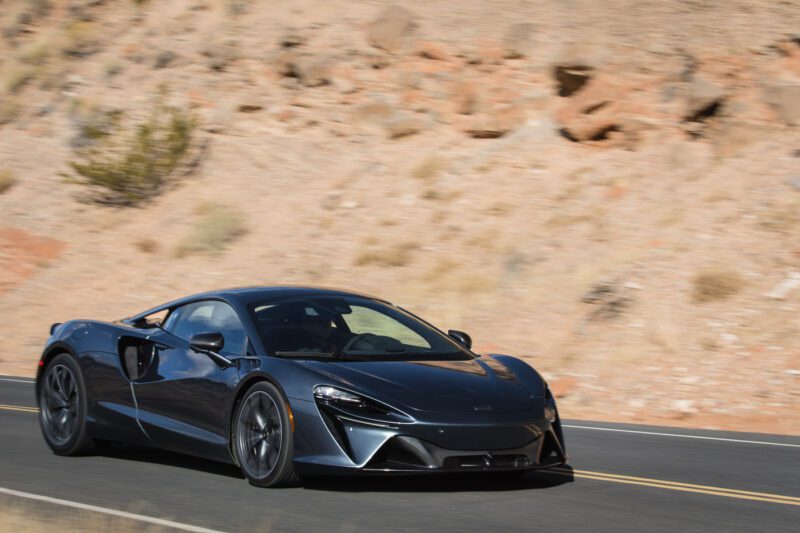
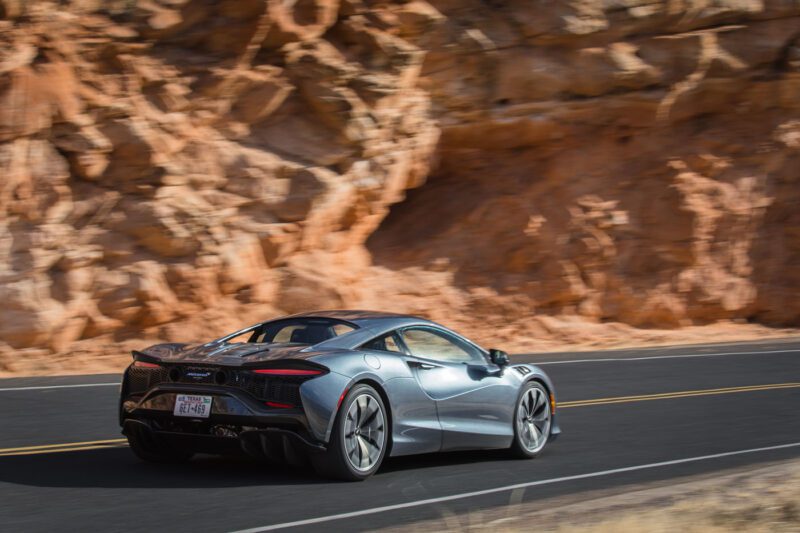
As its name suggests, track mode is the car’s most aggressive mode, and it starts to tug at its leash. Throttle response becomes razor sharp, and lag from the engine becomes nearly non-existent. As the electric motor fills in torque throughout the rev range, the Artura hits its peak output quickly and stays there longer. Don’t, however, mistake its aggressiveness for a lack of composure. The Artura is manageable, balanced, and inviting, even turned up.
As you approach its limits, the Artura never stops talking to you. Whether it be from its quick hydraulic steering system or mechanical brakes, tons of feel comes through. The McLaren feels more tactile and involved than a similar Lamborghini or Ferrari. Sure its engine could use a bit more flamboyance, but from a driver’s perspective, the McLaren is the one you want to be in if you want a surgical approach to speed.
Lamborghini Huracan STO Review: A Proper Race Car for the Road
Part of why the Artura is so well-behaved on the road comes down to its weight and size. Thanks to weight savings in its engine, battery, and electric motor, it tips the scales at just 3,300 lb. A comparable Lamborghini Huracan Technica weighs in at 3,500 lb, while a Porsche 911 Turbo S comes in at 3,700 lb. Thus the Artura feels lighter on its feet than competitors and remains eager to dance on a back road.
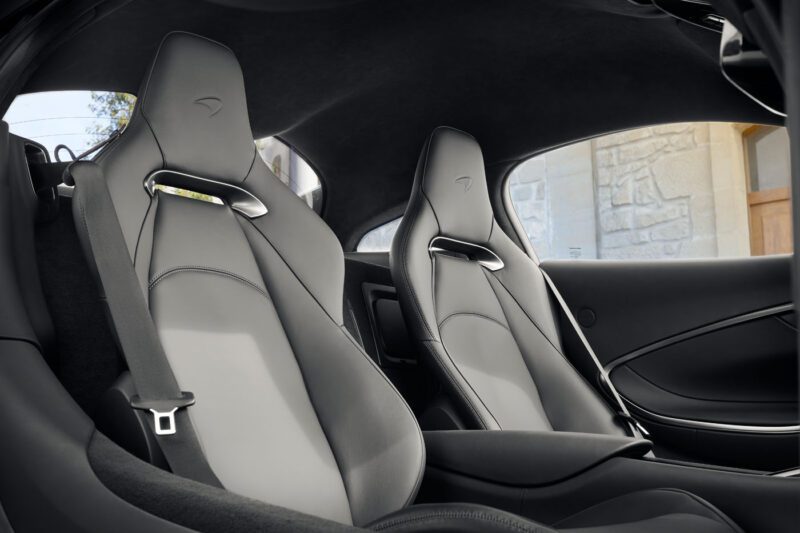
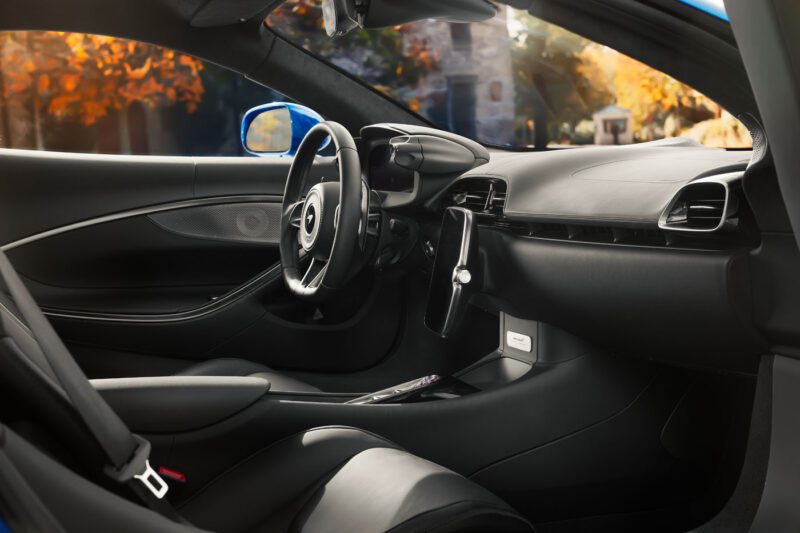
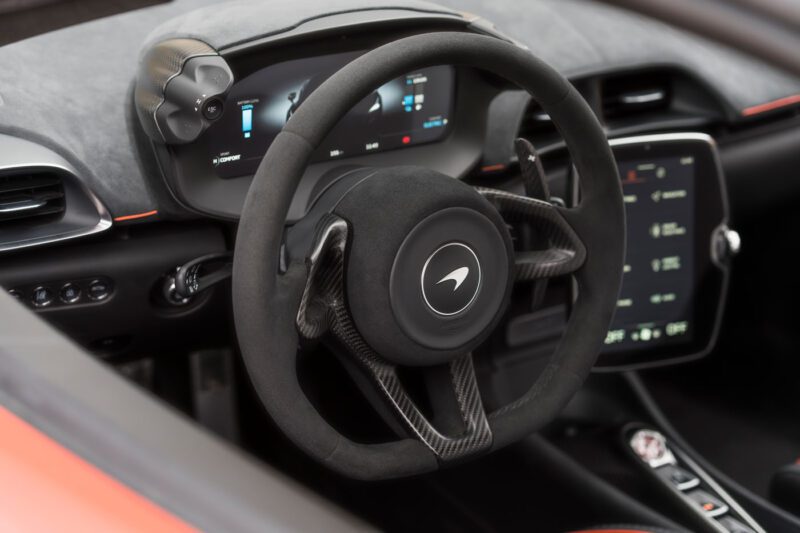
The Artura achieves this weight thanks to its new McLaren Carbon Lightweight Architecture (MCLA), composed of 500 carbon fiber pieces. It’s lighter than any other monocoque the manufacturer has made and extends further back to accommodate the new battery packs found in electrified cars. It’s a clear sign that the hybrid era is here to stay. It further saves on weight by counting on aluminum structures for the front and rear subframes, which amount to 10 percent weight savings to their previous configurations.
Weight aside, the new structure allows for lower door sills, making it significantly easier to get in and out of. Once sat in either the base Comfort seat or the optional Clubsport seat, you’re met with a cabin that’s a significant improvement over that of the 570S. It feels well put together, with quality materials and odd squeaks or rattles to report. While the layout consists of an eight-inch tablet-style infotainment system with some pretty sizable bezels, it finally features Apple CarPlay and Android Auto connectivity. It’s still a wired system, but at least McLaren finally matches the offerings Lamborghini and Ferrari have had for years.
View More Exotic Car Reviews
In the interest of full transparency, it is worth mentioning, however, that during my drive, my test vehicle suffered an issue with its key fob, not allowing the car to start occasionally, and a parking sensor that insisted I was about to hit something, even when I was alone in an open desert. According to the folks from McLaren, the key fob mishap is due to the type of battery it was using, and the parking sensor problem is due to my tester being a pre-production example, not exactly the car customers will eventually receive.
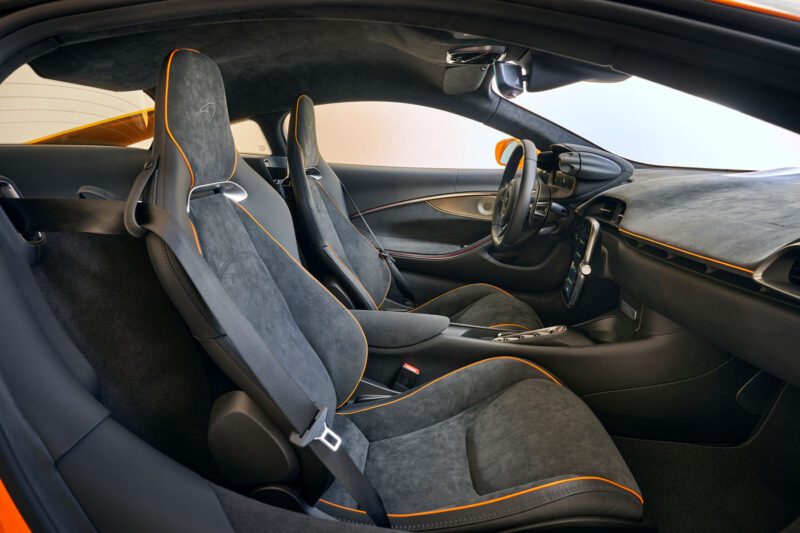
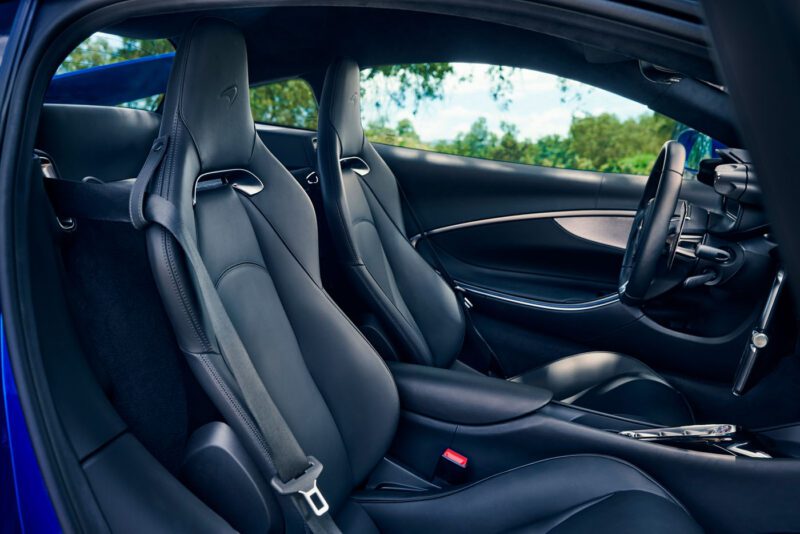
Towards the end of the day, we left the road behind for some time on Las Vegas Motor Speedway’s road course, which was quite an eye-opening experience. Before this drive, I had just driven the new Lamborghini Huracan Tecnica and Chevrolet Corvette Z06 at different race tracks, and the Artura impressed the most at the limit. Like on the road, it doesn’t fall flat on its face once you genuinely push it. It takes very harsh inputs to kick its tail out. It wants to stick through corners, and even while exiting tight bends where I’d be sideways in a rear-drive Huracan, the Artura sticks.
I managed nearly four hours behind the wheel of the new Artura, both on the street and the track. It’s easily one of the most capable supercars I’ve driven all year. It’s quick, agile, and responsive, like a six-figure machine should be. Which is excellent, considering it starts at $233,000. It may not have the raw sound of a Lamborghini or the glitz of a Ferrari, but McLaren’s latest creation proves that a distilled, focused approach to performance can be just as exciting.
It would be easy to assume that downsizing to a V6 and including an electric motor would dilute the driving experience, but you’d be dead wrong. Instead, the two add to the Artura’s appeal, making it far more versatile than the car it replaces while adding an abundance of performance. Whether on a short commute or on track, the Artura is easily one of the most compelling cars McLaren has ever made.
